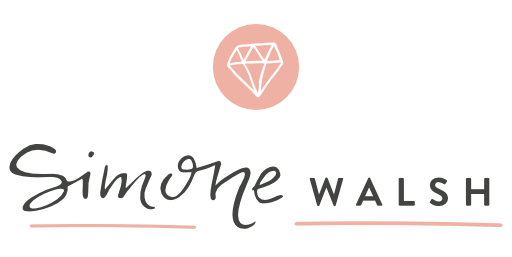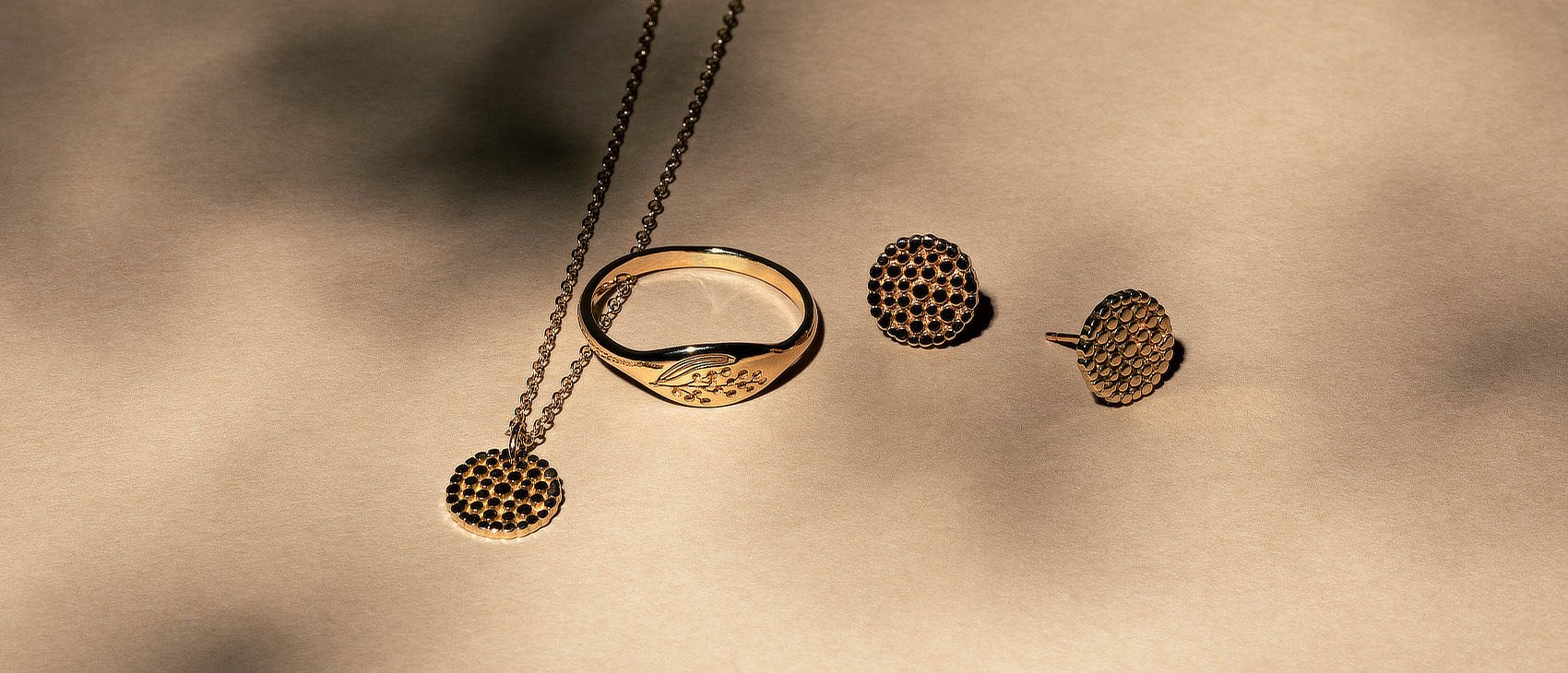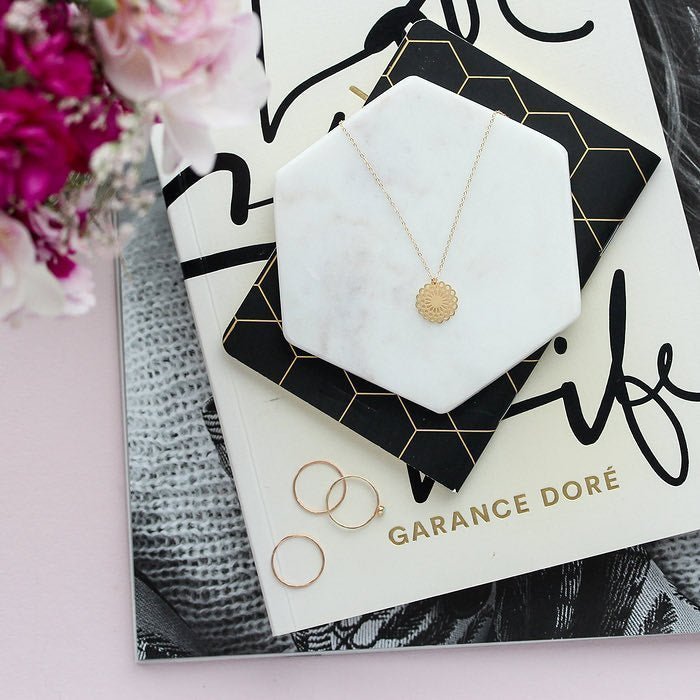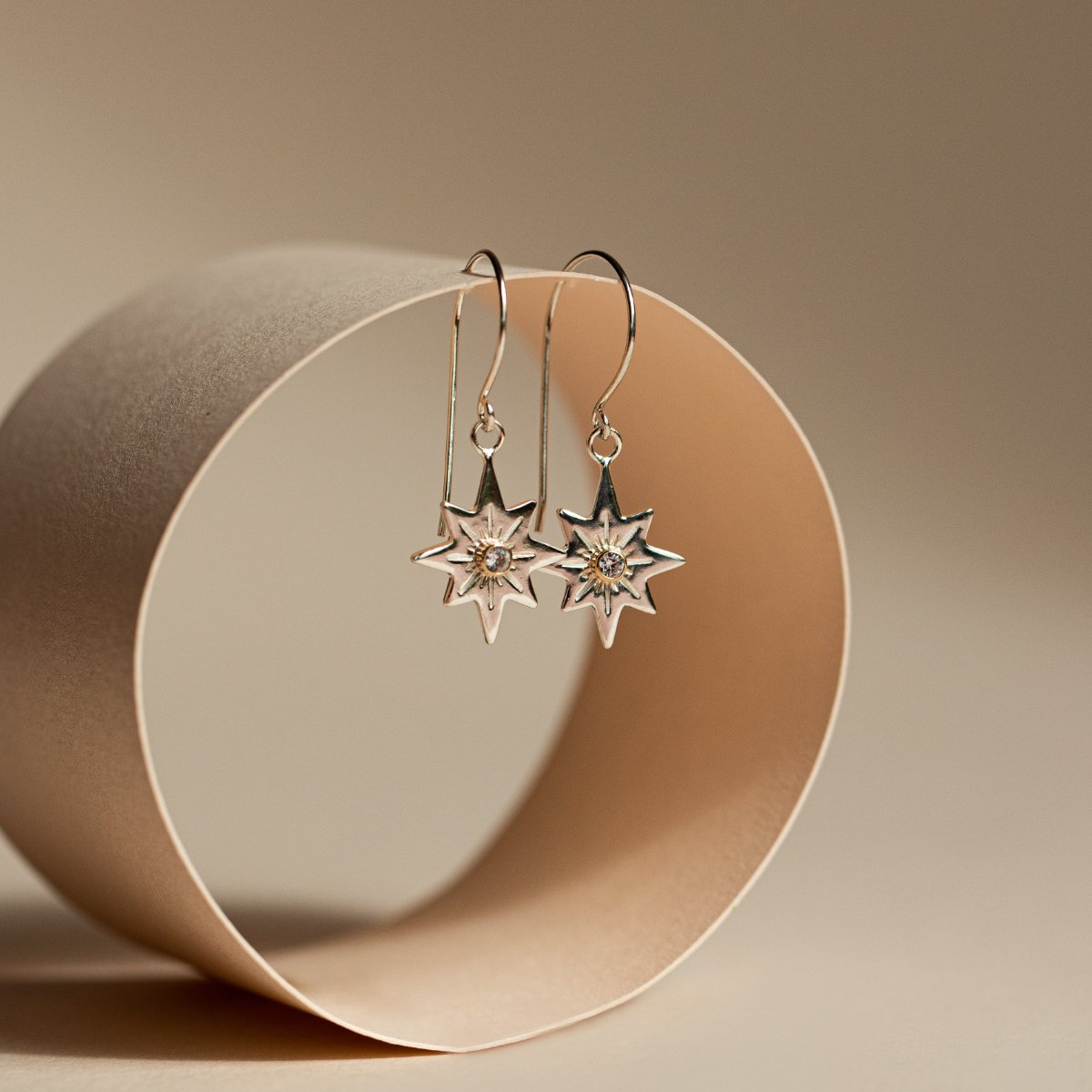 Gold has always been one of the most treasured and valuable precious metals on the planet. Whether you're buying jewellery as a gift or treating yourself, understanding gold as a metal and what different carats (and karats) mean will help you to make better choices and find the perfect piece.
Gold has always been one of the most treasured and valuable precious metals on the planet. Whether you're buying jewellery as a gift or treating yourself, understanding gold as a metal and what different carats (and karats) mean will help you to make better choices and find the perfect piece.
As an Australian jewellery designer with over 30 years of experience, I've worked extensively with gold. Whether creating unique solid gold jewellery or combining gold with other precious metals and gemstones, I've learned the ins and outs of this beautiful metal.
My aim is to help you make informed decisions when choosing gold jewellery to love and treasure for years to come. In this guide, I'll break down everything you need to know about gold carats (and karats!), colours, and hallmarks, plus how to choose the right gold jewellery for your needs.
Be sure to check out our Gold Jewellery collection for beautiful designs in solid gold, gold vermeil, and more. Our full Australian jewellery range also includes unique, artisan-created jewellery designs in silver and mixed metals.
Let's get started to learn all you need to know about gold ...
The Fascination with Gold: What Makes It So Special?
Gold is a metal like no other. It's the second least reactive of all metals, meaning that in its pure form it won't tarnish, rust, or corrode (the least reactive is platinum, but only by a very small margin).
This makes gold a perfect choice for jewellery that lasts a lifetime. Plus, it's naturally found in a pure form, unlike many metals that need intensive processing to extract.
Humans have cherished gold for thousands of years. The Egyptians were using it as early as 3000 BC, and it remains a symbol of luxury and beauty today. Gold's vibrant colour, durability, and rarity make it a truly timeless choice for jewellery, whether for everyday wear or special occasions.
Why Is Gold So Expensive?
At the time of writing, gold is about 90 times more expensive than silver - true story!
The simple answer as to why is: scarcity and desirability. It's estimated that only around 171,000 tonnes of gold have ever been mined: about enough to fit into a single Olympic-sized swimming pool. Gold's rarity - combined with its long-lasting beauty and versatility - have caused it to be highly valuable throughout human history.
However, in the modern world, gold is also significant in financial markets, where it may be used as an investment, or as a hedge against inflation or currency fluctuations.
Today the explanation for the price of gold at any given time is simply: what financial markets have decided it's worth. However, its rarity and durability are intimately tied up with why financial markets value it in the first place.
Can I Buy Cheap Gold?
The price of gold will fluctuate over time, but it will always be expensive. When shopping for solid gold jewellery, be very wary of "cheap gold": quite simply, there is no such thing.
Just because a metal is gold coloured doesn't mean it's solid gold - or contains any gold at all. It pays to look for the details and ask questions if you're not sure.
If you've experienced gold jewellery discolouring or leaving black marks on your skin, this doesn't necessarily mean it isn't real gold: there are explanations for such issues. Visit our Jewellery Care & Cleaning Guide to learn more and find out what to do.
Related Reading:
Learn more about precious metals in these handy articles:
What Does a Gold Carat Mean? And what is a Gold Karat?
In Australia and many other countries, a gold carat (ct) is a measure of the metal's purity. If you see the word 'carat' used for gemstones, this refers to their weight.
In the USA and elsewhere, the spelling of 'karat' is used instead for gold purity, with 'carat' used only for gemstone weight. Confusing, huh?
But all you really need to know is that the terms mean exactly the same thing: there are just regional differences in spelling. As I'm an Australian jeweller, I will use the spelling 'carat' in this article.
Pure gold is 24 carats, meaning 24 out of 24 parts of it are gold. When gold is alloyed with other metals to make it more durable or to achieve different colours, the carat rating decreases.
For example:
- 18ct gold: 18 parts gold, 6 parts other metals (75% pure gold).
- 14ct gold: 14 parts gold, 10 parts other metals (58.5% pure gold).
- 9ct gold: 9 parts gold, 15 parts other metals (37.5% pure gold).
You will very rarely see jewellery made in 24ct gold, and even 22ct is quite rare. This is because the purer the gold, the softer the metal - and soft metal is not ideal for making jewellery.
Instead gold is alloyed with other metals to make it stronger and more suitable for different uses, including jewellery.
18ct and 14ct are the most common purities you'll see used to make jewellery. These will also have a brighter yellow, which is lost in lower carats of gold, with 9ct and 10ct gold being a fairly light yellow.
Understanding Gold Hallmarks or Purity Stamps
Most gold jewellery is stamped to indicate its purity. Stamps like '14K' or '14ct' are easy to understand and should be a reliable indicator of purity.
However, you might instead see numbers like 375 (9ct: 37.5% gold), 585 (14ct: 58.5% gold), or 750 (18ct: you guessed it, 75% gold). These numbers also help identify the metal's value and quality.
Purity stamps are not legally required in some countries, including Australia, but for gold particularly jewellers will tend to use them to ensure their customers know what they are getting and so that the pieces will easily retain their metal value.
How to Choose a Suitable Gold Carat
9ct Gold: Affordable but Light Coloured
9ct gold contains 37.5% pure gold, so it will be durable and retain the value of its gold content. It's the most affordable type of gold in Australia and other countries. However, it has a duller colour than higher carats and is less valuable. Consider 9ct gold for budget-friendly jewellery, especially for everyday wear or for children. You might also come across 10 carat gold, which has very similar properties.
14ct Gold: A Good Balance
14ct gold, with 58.5% pure gold, offers a great balance between durability, colour, and affordability. It's long been a popular choice in the USA and is becoming more common in Australia. We most often use 14ct gold in our solid Gold Necklaces, Gold Earrings and Solid Gold Rings.
18ct Gold: Vibrant & Valuable
18ct gold (75% pure) is known for its rich colour and luxurious feel. It's ideal for high-quality investment jewellery. It's also a popular choice for wedding and engagement rings. While it is more expensive, the investment and bright colouring may well be worth it for pieces you'll wear and treasure forever.
22ct & 24ct Gold: Pure & Rare
22ct gold (91.6% pure) and 24ct gold (99.9% pure) are rarely used in everyday jewellery. They are too soft for regular wear and are more commonly seen in fine jewellery which will see very minimal wear and handling. However, you might see 24ct gold used in gilding or plating.
Gold Colours: Yellow, Rose & White
Gold comes in a range of beautiful colours, including:
- Yellow Gold: The classic warm glow from the colour of pure gold, which is especially vibrant in higher carats.
- Rose Gold: Pure gold alloyed with copper to create a pinkish or reddish hue: beautiful in solid, gold filled and gold vermeil pieces.
- White Gold: A yellow-grey metal, made of pure gold most often alloyed with palladium or nickel and usually plated with rhodium for a bright white finish.
About White Gold
I'm not a fan of white gold jewellery. White gold is more of a warm grey colour than the bright white you'll see in mainstream jewellery shops, where the gold is invariably plated with rhodium. This will eventually wear through and need re-plating. If the white gold underneath has been alloyed with nickel, this may cause skin problems.
If you like white coloured metal for jewellery, then choose more affordable sterling silver jewellery or consider even more expensive platinum.
About Rose Gold
As for rose gold, it can be a beautiful and striking alternative to more common yellow gold. Rose gold is sometimes called pink gold or red gold, with varying intensities of colour, depending on the alloy used. I am indeed a fan of rose gold!
Other Gold Colours
You might come across other colours of gold, including green, blue, grey and black. In each case the type of metals alloyed with pure gold will play a role in the finished colour.
I recommend looking into what metals are used to create these colours to ensure that you're comfortable with wearing them against your skin.
Mixed Metals: Gold & Silver
I really love creating jewellery that's a mix of sterling silver with solid gold highlights. It creates a unique look and adds the quality of gold to sterling silver.
For a mix of silver and gold jewellery, check our Mixed Metal Jewellery collection.
Affordable Alternatives to Solid Gold
Solid gold jewellery is always the best, most durable and valuable choice. However, sometimes you'll want gold jewellery which is more affordable - and you do have some good (and bad!) options for this.
Gold Plating
Gold plated jewellery is much more budget-friendly than solid gold and has the same bright gold finish as much more expensive pieces. Does that sound too good to be true? Generally, that's because it is.
Sometimes plating is so thin that an eraser can remove it, so you can imagine what regular wear and tear will do. Also you generally won't have any idea of what the metal beneath the plating is made of.
I don't recommend regular gold plated jewellery - the savings just aren't worth it.
Gold Vermeil
I do recommend real gold vermeil - and I use it in a number of my own designs. This finish has a much heavier deposit of gold over quality sterling silver. It's much better wearing and holds its value much better than regular plated jewellery.
Gold Filled
This is another recommended affordable gold option. It's made with a thick surface of gold which is bonded to a base metal underneath. This is the most durable solid gold alternative, but it isn't as valuable and it may be difficult to sell as scrap should you need to.
Brass
You may find brass jewellery which has a gold-like colouring and finish, but I don't recommend it. Brass is a base metal which will turn your skin green and it can and will corrode in the right circumstances. It may contain nickel and lead, both of which are toxic. The bottom line: never buy brass jewellery, especially if it will sit against your skin.
More About Affordable Gold Alternatives
You can learn much more about this topic in our guide to Different Types of Gold Jewellery.
Also be sure to explore our collection of Gold Vermeil & Gold Filled Jewellery designs.
(Reading this on a website that isn't simonewalsh.com? Be aware that the content has been stolen, infringing the copyright of a small business. ABN: 65108844126)
Choosing the Right Gold Jewellery for You
When buying gold jewellery, consider:
- Durability: 14ct or 18ct gold is ideal for quality pieces you'll wear every day or want to dress up with.
- Budget: 9ct gold is more affordable but offers less warmth and value.
- Occasion: Invest in 18ct gold for heirloom-quality pieces or very special gifts.
For more advice, see our Guide to Choosing the Best Gold Jewellery.
Explore Our Gold Jewellery Collection
Whether you're looking for a unique gold necklace, dainty gold earrings, or a meaningful gold ring, we have something for you. Discover our beautiful Australian made designs in solid gold, gold vermeil, gold filled, and mixed metals. Take a look at our:
Related Reading:
- How Much Gold is There in the World? - BBC News
- Gold - Wikipedia
- Colored Gold - Wikipedia
- White Gold or Rhodium Plated - Confusion or Deception? - Finishing
- About Gold Jewellery - World Gold Council






 Simone Walsh is a
Simone Walsh is a 
